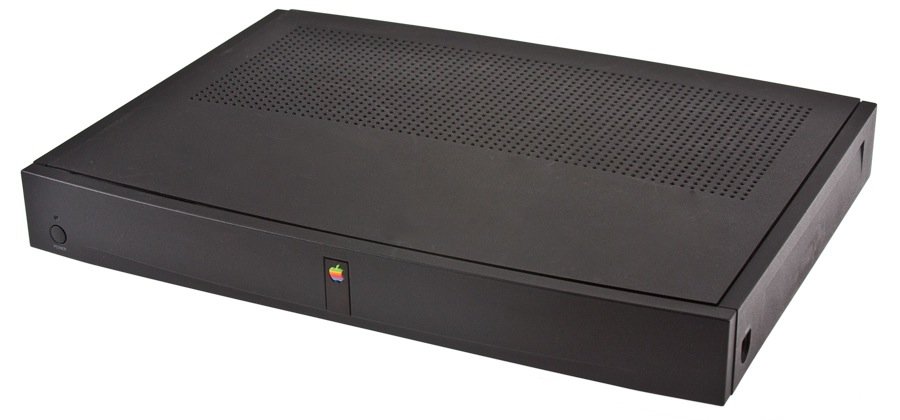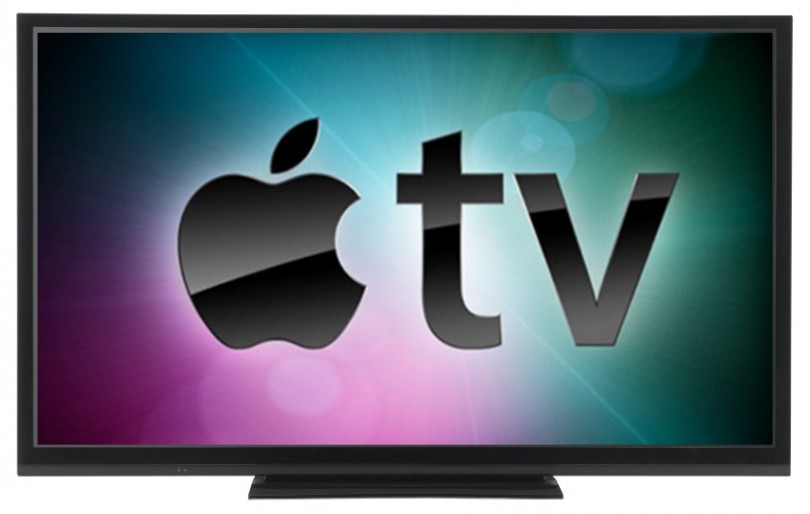aNewDomain — Well, it’s September and the annual fall Apple event will be held next week. Beyond the hype of the next iPhone (the rumored iPhone 6S with Force Touch), the bigger hype is around Apple’s much-delayed update to Apple TV and its streaming video receiver.
On January 9, 2007 Apple released the first generation of its TV set-top box. It looked like a slim Mac Mini and ran a modified version of Mac OS X with a 40MB or 160MB hard drive for downloading movies.
Still referring to it as a “hobby,” Apple released its 2nd generation box in September 2010: a small black box running iOS without a hard drive. Though not the first streaming box on the market, Apple made the concept mainstream.
There have been 3rd generation “updates” in 2012 and 2013, but Apple has yet to release a new hardware edition of the Apple TV.
The New Apple TV
After years of speculation that Apple would be bringing TVs to market — that is, an actual televisions, not a set-top box — such a product has failed to materialize. After all, why would Apple enter a crowded, commoditized market with razor thin margins?
 Instead of giving in to pressure from competition, Apple has taken its time. It looks as if the company is finally ready to reveal to the world what it’s next innovation in TV will be, and it’s not just a product to compete with the Roku, Chromecast, Amazon Fire TV, etc.
Instead of giving in to pressure from competition, Apple has taken its time. It looks as if the company is finally ready to reveal to the world what it’s next innovation in TV will be, and it’s not just a product to compete with the Roku, Chromecast, Amazon Fire TV, etc.
As has been widely reported, the new box may cost between $149 and $199, so what will Apple dazzle the world with? What will make the next Apple TV the must-have product for TV lovers everywhere?
First, Apple must have realized that the key to a successful TV product is content. Content is king. While people play video games on their TV, the main reason one turns to the tube is to watch something — sitcoms, news, movies, YouTube, etc.
This is a mostly passive activity, which any attempt to deviate from (like interactive TV or WebTV) has been met with failure.
Second, Apple must give consumers a reason to ditch their cable/satellite TV boxes and service. Unless the Apple TV works with these services (and that’s not the way the market is going), Apple must offer a compelling package of content at a price less than the traditional cable and satellite TV service providers.
While several million “cord cutters” (primarily millennials) have ditched their TV subscriptions, opting for a fast Internet connection and content from Hulu, Netflix and, most recently, Sling, only Apple could offer a product compelling enough to convince the masses to do the same.
Unfortunately content deals have been difficult and slow for Apple to secure. This is most likely the reason the Apple TV has been delayed. Additionally FCC retransmission consent rules and net neutrality have further slowed progress. But the struggle between TV content providers, incumbent distributors (cable and satellite) and Apple has just begun to ease with services such as Hulu and Sling.
Most recently, we have begun to witness the “unbundling” of TV content with streaming-only subscriptions offered by HBO Now, Showtime, CBS All Access, Hulu and Sling, and original content from Netflix and Amazon Prime.
 So while reports indicate that Apple has delayed their service until 2016, there’s a high probability that the next Apple TV will include content similar to Sling, and access to most every other offering except maybe Amazon Prime.
So while reports indicate that Apple has delayed their service until 2016, there’s a high probability that the next Apple TV will include content similar to Sling, and access to most every other offering except maybe Amazon Prime.
With content solved, how will Apple proceed?
What will make Apple TV the next big hit?
1. Access to Over-The-Air (OTA) reception — Streaming is fine, and live broadcast streaming will continue to grow, but access to local digital broadcasts is still necessary for a lot of real-time news and sports content.
2. A better method of content navigation — Let’s face it, the interactive program guide/grid is no longer an effective method of finding what an individual may want to watch. A combination of Siri, socially influenced content recommendations and AI should make finding content of interest effortless. TiVo already has a $50 set-top box called the Roamio OTA that combines OTA and access to Netflix & Hulu, so perhaps Apple will take a note out of TiVo’s book.
3. 4K video — Most reports say that this will not make it into the next Apple TV box, but there will most likely be an updated box with 4K resolution in 2016. The Apple TV will also reportedly get a similar upgrade path as the iPhone, with an “S” designation.
4. Gaming — This would not be the first TV gaming platform for Apple (previously it was Pippin in 1995). Even the current generation of Apple TV should have the ability to play iOS games (Airplay has somewhat enabled this capability) but it’s not widely used. The rumored Apple TV SDK will enable native gaming and possibly streaming gaming (such as former Apple employee Steve Perlman’s OnLive service). While the graphics power of an Apple TV box may not equal an Xbox One or Playstation 4, it should certainly become an alternative to expensive, dedicated consoles.
5. Local or cloud storage — While this is becoming less and less important, having the ability to record OTA broadcasts and other content that may never be available in an on-demand streaming format would be welcomed. It could be done with an internal hard drive, an external hard drive or a cloud-based service.
6. An advanced remote with Force Touch — Sure an iPhone or iPad could function as a remote control, but who wants this to be the primary way to control their TV? Either device serves well as a second screen, but having to open an app for a dedicated remote is too clumsy, especially when you’re texting on that device too. Siri could also be useful here, as would some sort of gesture control or even a device such as the recently announced TouchJet Wave, enabling any TV to become a touch screen.
7. Facetime — It’s about time consumers should have the ability to sit on their couch and use Facetime on the big screen. This could be the same camera used for gesture control, similar to the Xbox Kinect (developed by the company Primesense, which Apple now owns). And we can expect a certain industry to adopt this platform as it has with every previous TV/screen technology and drive greater sales of Apple’s next TV box.
8. HomeKit — It’s already been confirmed that the next Apple TV box will also serve as a home automation “hub” to support Apple’s little talked about entry into the Internet of Things market. This is certainly smart because it will attract customers looking to adopt HomeKit.
All of this is speculation and wishful thinking, but I’m certain we will be dazzled on September 9, 2015.
For aNewDomain, I’m Chuck Ward.
Images in order: Apple TV image by Chuck Ward; Apple Interactive Television Set Top Box screenshot courtesy SoloMacs; Apple Interactive Television Box screenshot courtesy ShrineofApple.













